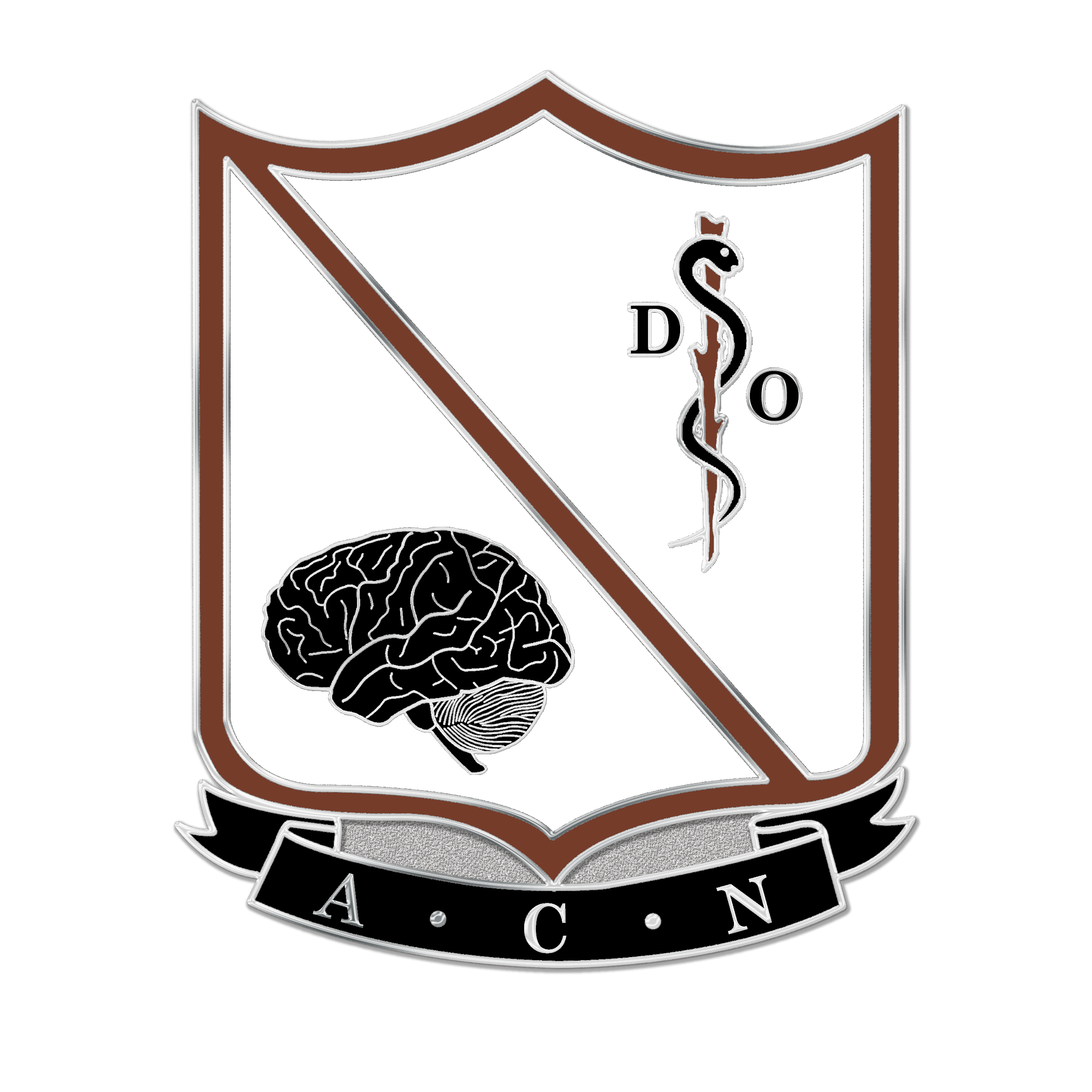The American College of Neuropsychiatrists
(An Osteopathic Institution)
By Floyd E. Dunn, D.O., F.A.C.N., F.A.A.M.D.
During the 21st Annual Meeting of the College, held in Washington, D.C., as indicated above, we were invited to visit the famed St. Elizabeth Hospital by Superintendent Winfred Overholser, M.D., who was also at that time the Editor of the Journal of Neurology & Psychiatry. We spent an interesting afternoon July 11, 1958 on an inspection tour of that facility and at the close of our visit we all posed with Dr. Overholzer on the front steps of the Hospital while our ‘Ken’ Bailey took some color shots of us, one of which reposes among my memorabilia, sent to me as a “TOKEN OF MY APPRECIATION” later by Ken.
The 23rd Annual Meeting of the College was held at the old Hotel Muehlbach in Kansas City, Mo., July 15-16, 1960, just prior to and in conjunction with the Annual Convention of American Osteopathic Association, which had selected that city as a convention site for the first time since 1916. Historical highlights of that meeting were the convivial banquet at the Golden Ox next door to the Kansas City Stock Yards (with real Kansas City steaks) and the charted bus trip to Menninger Foundation’s facility at Topeka, Kansas where we toured the campus and enjoyed a colloquium with Dr. Karl Menninger. Dr. Karl made reference to what he termed “ the coming rapproachment” between D.O.’s and M.D.’s, thus confirming rumors of the coming California Defection—which California D.O.’s at that very time were denying.
Details of the development and the consequences of “the California Situation” are available at the A.O.A. office in Chicago, and in the personal files of this historian (since I was, during those years, a Missouri representative to the A.O.A. House of Delegates) but it is pertinent in this history only to report the repercussions and disastrous effects of the California Merger upon our College. When the A.O.A. received positive confirmation from the American Medical Association and the California Medical Association that a merger was indeed being negotiated between the California Osteopathic Association and the California Medical Association, by an 18 to 1 vote on November 20, 1960, its Board of Trustees revoked the charter of the C.O.A. This meant that unless our certified specialists in California refused to accept the $65.00 “little m.d. degree” (as it came to be called in D.O. circles) or repudiated it and sent it to the A.O.A. to be placed in escrow, and then joined the new Physicians & Surgeons of California state osteopathic association comprised of the people in that state who retained their osteopathic identification, they would lose their A.O.A. specialty accreditation. A.O.A. officialdom took the legally correct stand that they could not (and would not) accredit non- members as specialists. Also our California members could not continue as members of the American College of Neuropsychiatrists because all members of affiliated societies had to maintain membership in the A.O.A. and their proper Divisional Society or Association. The result was the loss to the College of one third of our membership, although we endeavored for as long as we dared to find a way to allow those who so desired to continue their A.C.N. affiliations. We did keep on our rolls those Californians whom we had honored by making them Fellows of the American College of Neuropsychiatrists, since that is an honorary degree and honorary degrees are not ordinarily rescinded. But we lost some of our leaders in organizational activity, and the chain of progression up through posts of increasing responsibility in the college was seriously disrupted.
Because of the shift of the A.O.A. Annual Convention away from the former custom of meeting with its House of Delegates, our College had to solve the problem of our own place and time for our Annual Meeting. Because of our small numbers, the idea of separate meeting received little support; the possibility of meeting at the time and place of the A.O.A. House of delegates was favored only by the few of us who also had some official A.O.A. position that required our going to Chicago at or just before the time of the House of Delegates sessions. So most of us took the pragmatic position that we had best meet at the A.O.A.’s chosen city for their Annual Scientific Sessions, either conjointly or just prior to the dates of the parent organization’s meeting. This meant shifting from our summer- time meetings (usually sometime in July) to the time selected by the A.O.A.: January 24-25 at the Deauville Hotel in Miami Beach.
